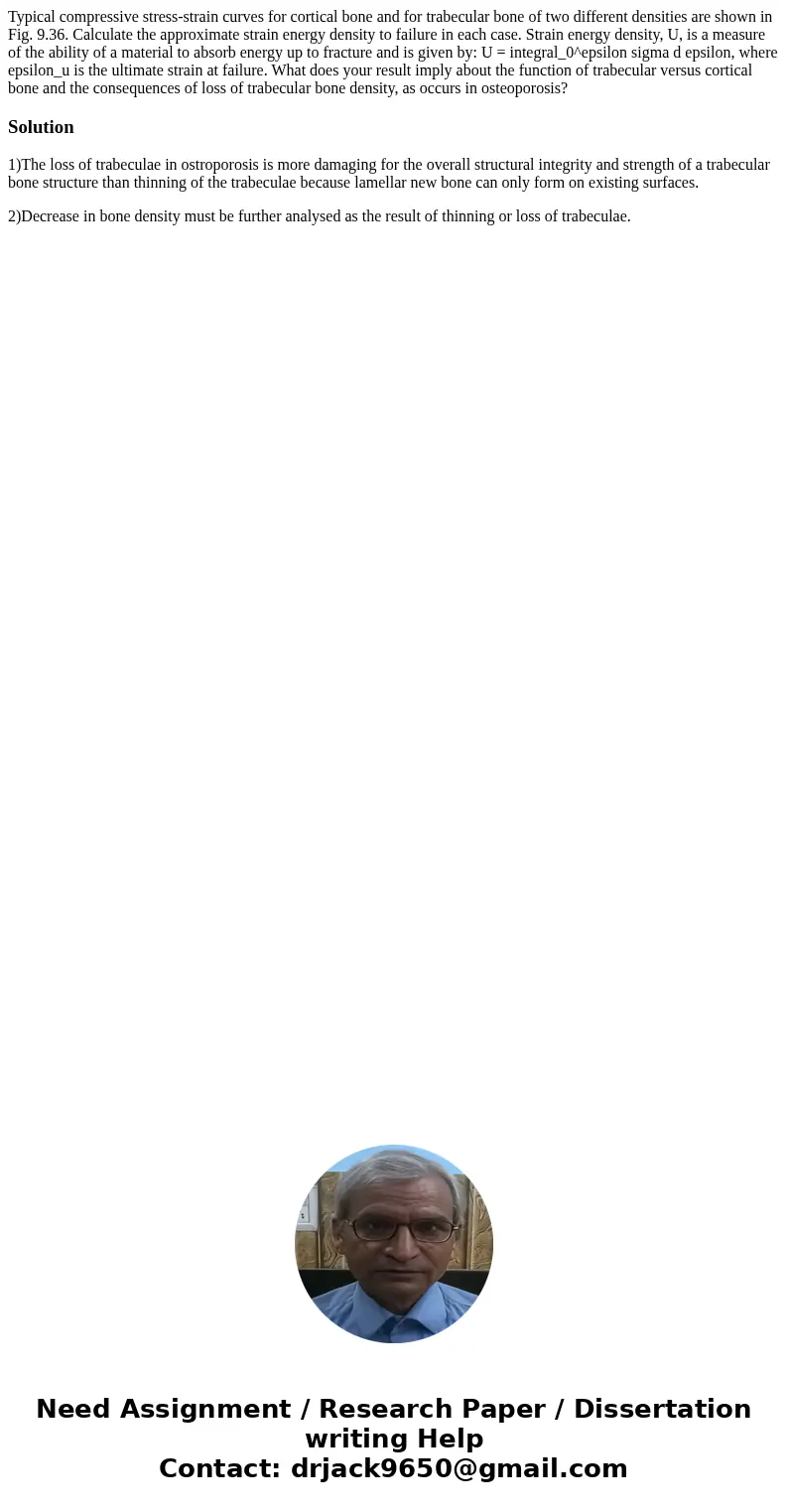Typical compressive stressstrain curves for cortical bone an
Typical compressive stress-strain curves for cortical bone and for trabecular bone of two different densities are shown in Fig. 9.36. Calculate the approximate strain energy density to failure in each case. Strain energy density, U, is a measure of the ability of a material to absorb energy up to fracture and is given by: U = integral_0^epsilon sigma d epsilon, where epsilon_u is the ultimate strain at failure. What does your result imply about the function of trabecular versus cortical bone and the consequences of loss of trabecular bone density, as occurs in osteoporosis? 
Solution
1)The loss of trabeculae in ostroporosis is more damaging for the overall structural integrity and strength of a trabecular bone structure than thinning of the trabeculae because lamellar new bone can only form on existing surfaces.
2)Decrease in bone density must be further analysed as the result of thinning or loss of trabeculae.

 Homework Sourse
Homework Sourse